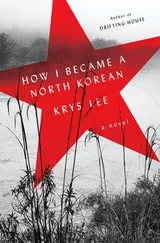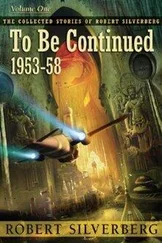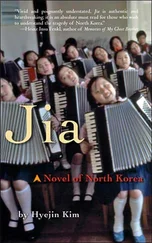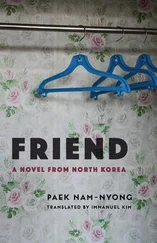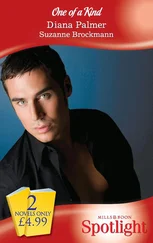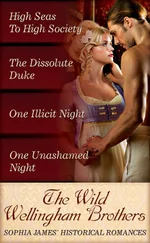The road to Pyongyang is spacious, quiet and clean. People in different shades of khaki and grey ride bicycles, wait at bus stops, walk with their children, and read books in the sun. Others squat on pavements, clipping grass from the kerb or weeding small vegetable plots beside the road. I peer eagerly between the buildings, scouring the landscape for signs of starvation. No one is fat. But no one is dropping dead in the street either, or shuffling around in chain gangs, or staring at the ground in brainwashed stupors.
They look purposeful, fit, preoccupied, thoughtful, and, strangest of all, content. Take away the colour-coordinated outfits, and they could be normal people in any city in the world, just getting on with their day.
We turn into a wide boulevard fluttering with red-and-blue North Korean flags. An ancient trolley bus trundles along, its joints freshly covered in crimson paint. Schoolboys in sailor suits stroll on the sidewalk arm in arm, laughing. A woman in overalls bicycles past, balancing a brass trophy on her handlebars. Two little girls with pink backpacks sit on the grass, licking vanilla ice cream cones. An old woman with a wicker basket on her head waits at the bus stop, cooling her neck with a silk fan. An antique tractor chugs beside a canal, followed by a man in a safari suit pedaling a rickshaw. Fishermen squat on a stone pier, smoking. Ahead of us, vintage white and grey sedans coast along the wide, pale avenues. Flanking them, at a gracious distance, are green and pink apartment blocks, old but spotless—with window boxes full of flowers.
I feel disorientated and confused. It’s not just because I’m somewhere I’ve never been before. It’s because something is missing. Something crucial, that I rely on to gauge where I am, to locate myself within space. Something ever-present.
Then I realise what it is: advertisements. Those visual flashes that sell you things—on your mobile screen, on news stands, on the backs of taxis—blinking from gas stations, winking from the hopping bags of people walking by. The logos you see when you sit next to someone on a park bench or stop beside them at a traffic light, registering, without even realising, the brands they’re wearing—those images have vanished. Capitalism has been turned off. The visual noise is gone.
The overwhelming effect is of total calm. Instead of fast-food ads on the bus stops, there are landscapes. Instead of billboards in the streets, there is hand-painted propaganda art. Instead of flashing logos in the public squares, there are monuments. No looming screens with naked women selling perfume, no paparazzi snaps of stars with cellulite in the stands. No McDonald’s, no Sony, no Nike, no Apple, no Coke. Instead of neons marking the buildings as the property of IBM or BHP, there are big red banners with bold white slogans, under smiling portraits of Kim Jong Il. And yes, the air is deliciously clean.
Pyongyang is unexpectedly beautiful. It’s an open-air museum, a giant socialist theme park. To me, it’s Disneyland.
I glance at Lizzette, wondering if she shares my wonder. But she’s poker-faced behind her Ray-Bans. I remind myself that the journalists who’ve been here before us have dismissed Pyongyang’s beauty, focusing on the deprivation and fear tucked behind its facades. The window boxes filled with flowers are fake; the backs of the buildings are burnt-out shells. The pyramid-shaped hotel in the distance is just for show—an unfinished symbol of Kim Jong Il’s hubris, with nothing inside. The two million people living here are the lucky ones, weeded out from the sick and the crippled and the ideologically deformed, allowed to exist in this huge Potemkin village for the benefit of prying foreign eyes—while the rest of the country lives in abject horror.
I try to match this picture with the one outside my window. Is it really all a front? On the other side of this glittering boulevard, is there a barbed-wire wasteland full of mud huts and misery? What would happen if, like Jim Carrey in The Truman Show , I made the driver do a U-turn? Would the laughing schoolboys and contented women at the bus stops suddenly not be there? Would the streets be empty, with extras lined up behind barriers, waiting for the order to walk happily around the block all over again, the next time a van of foreigners drives past?
Somehow, I don’t think Lizzette and I are that important. Our agenda is not the same as that of the journalists who’ve come here for a new twist on the North Korean horror story. I decide to keep an open mind.
The van cruises onto an overpass. Under the concrete pillars, I catch a glimpse of a thousand small children, squatting in perfect lines in the baking dirt. They flip heavy cardboard squares above their tiny heads, as a guard barks orders on a megaphone. The cards flip from yellow to red… then the image is gone.
“God—they’re only in kindergarten!” I say, before I can stop myself. Ms. K turns to us, surprised.
“We saw children under the highway,” explains Lizzette. “It is very hot,” I add. “In Australia at midday, children go inside.”
“Yes!” Ms. K beams proudly. “They are practising for the Arirang Mass Games. It is a great honour. They love it.”
The children squatting in the dirt did not look as if they loved it. They looked hot, and for six-year-olds, unnaturally still. Seeing and believing are clearly two different things in Pyongyang. I rephrase my decision: I will keep my mind as open as it can be in North Korea.
THEY DO THINGS AT CHOLLIMA SPEED around here. Chollima is a mythical winged horse that inspired Kim Il Sung’s postwar slogan Let us rush with the speed of Chollima! The slogan got Pyongyang rebuilt in record time. Chollima is also the mascot of North Korea’s soccer team, which has been mysteriously absent from the Pyongyang Times ever since it lost 3–0 to Côte D’Ivoire at the 2010 World Cup.
Ms. K gives us exactly three Chollima minutes to pay our deposit at the Yangakkdo Hotel, dump our bags with the concierge, and regroup in the lobby, an expanse of green marble as big as an ice rink. The usual markers of global travel are there—a jewellery and souvenir shop, a gallery, a cafe, a business centre—but none of it appears to have changed since 1992. The gold watches are Seikos, the souvenirs are dusty, the business centre has an old computer under a red velvet drape, and the gallery is filled with pictures of Kim Jong Il back when his Eraserhead hair was fashionable, looking at flowerbeds and mountains, surrounded by his minions.
I wait next to a narrow, wall-sized aquarium, staring into the eyes of a huge turtle. He bumps his shell against the glass, trying to get a better view. On the other side of the glass, waitresses in miniskirts dust red banquettes in the cafe. The turtle studies me closely. According to Ms. K, he has been here for twenty years, as long as the Yangakkdo. He gives me a resigned blink, full of the jaded ennui of someone who’s seen two dictators come and go, and floats to the bottom of his tank. I decide to call him Simon Sheen—the name Shin Sang Ok chose for himself when he escaped Kim Jong Il’s gilded cage and fled to LA.
“Anna, let us go to the Pyongyang Film Studio!” Ms. K calls from the revolving doors. A leggy girl in white denim slouches next to her. Eun is our interpreter. Her name means “grace,” and she resembles it physically—languid and slender, with flawless white skin. But her manner is affected—a studied kind of worldliness. Eun’s father is a diplomat, and she went to high school in Cairo. I compliment her on her leopard-print heels—did she buy them here? “No,” Eun sighs. “My dad got them in Shanghai.” Does she like fashion? I ask, wondering how much she knows. “Yes, I like it a lot.” So what does Eun think of Pippa Middleton’s bridesmaid’s dress—the one which briefly made her bottom the star of the tabloids? Eun looks confused: “What wedding? The one of Lady Di?” Eun left Cairo in 1998: that’s when her knowledge of the outside world stopped. She has no idea William and Kate just tied the knot, let alone Camilla and Charles. She has never heard of Net-a-Porter, The Sartorialist, Lady Gaga or the fact that fake fur is back in vogue. I make a mental note to sneak in a wedding pic of Wills and Kate for Eun, if Ms. K invites us back.
Читать дальше

